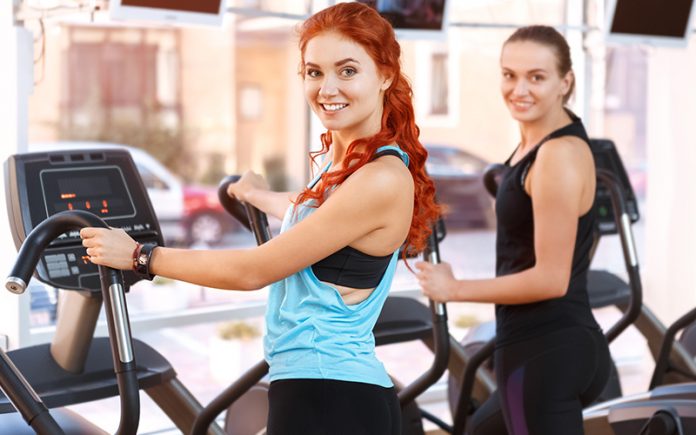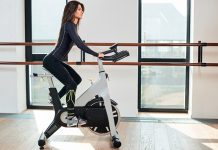Elliptical machines are excellent to use if you’re interested in cardio training and full body exercise (though some machines do not have moving upper parts and focus exclusively on leg-based training). The machine is also ideal if you’re out to get calorie burn, but all of this depends on the correct use of the machine; how to use elliptical machines, you ask? Fortunately, using elliptical machine is easy to get you in shape. In fact, as exercise machines go, the elliptical machine is an effective entry-level cardiovascular trainer. Moreover, since it doesn’t place much pressure on the joints, you can still do your workout with it even if you’ve suffered a joint injury in recent past.
The machine works by simulating walking, jogging and running using two pedals that can be pushed in a cyclical motion by the user’s feet. The incline of the walk, jog or run and the resistance that the pedals give to being pushed can both be fully customized, providing a unique training experience that fits your particular specifications.
Preparation
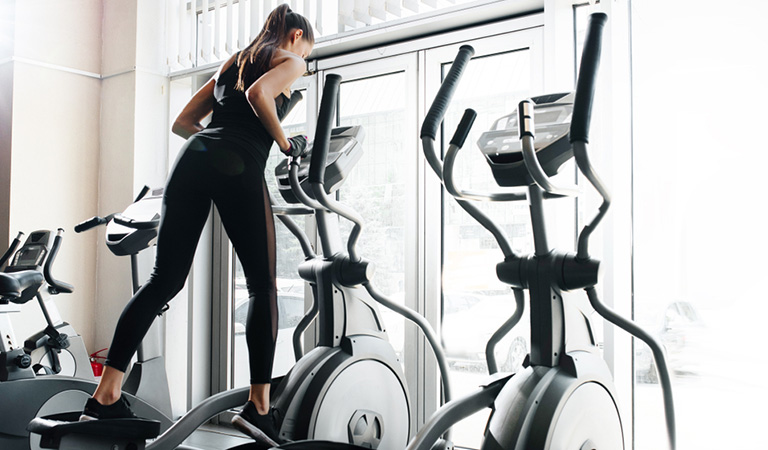
It’s important to prepare yourself before using an elliptical machine. You don’t usually need to warm up to use it, however; in fact, ten minutes using elliptical machine is, in fact, a highly effective warm up to any workout regimen.
While preparing, make sure you set a target for yourself before stepping foot in the machine. Here, it’s important to know not only what you want to achieve with your session, but also what your limitations are, as overdoing it excessively can lead to injury, as it can with all machine-based exercises. Set the amount of time you want to walk, jog or run for, the incline of the journey, and how much resistance you want the pedals to give before you use the elliptical machine. Unlike treadmills, most machines will have interfaces that allow you to alter all of these settings to fit your exercise plan.
Before Using Elliptical Machine
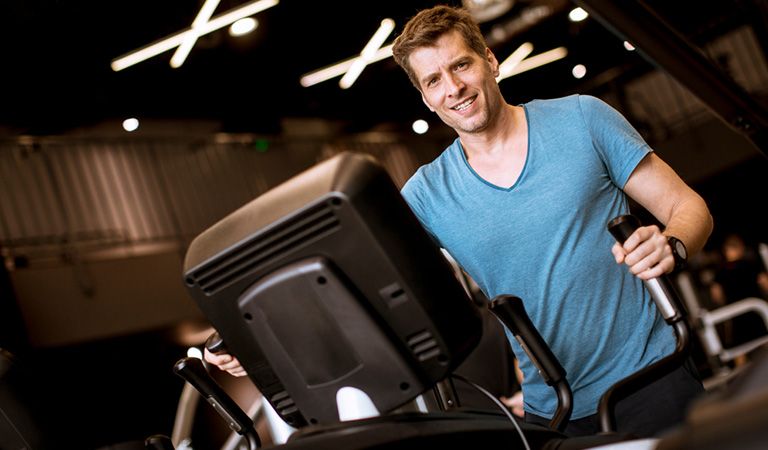
Once you’ve decided how you’d like to exercise, the next step is actually climbing on board. This part can trip some people up, so do be careful when actually climbing onto the elliptical machine – a lot of users are surprised by the sudden motion of a pedal upon stepping foot on the machine in the first place!
It helps, before committing to the exercise, to make sure that there is nothing in the room with you to create a distraction. Attention and focus are important in all exercises to make sure you get the most out of the process.
Before climbing on, make sure both hands are securely gripping the stationary handlebars attached to the machine. Next, carefully place one foot at a time on each pedal and be wary that the machine may start moving on its own. While stepping on, make sure you maintain good posture by keeping your back and head as upright as possible, keeping your shoulders back and your face pointed straight ahead. This is important, as you want to avoid straining your back and spine while operating the machine – it may help to imagine your head suspended from the ceiling by a thin string.
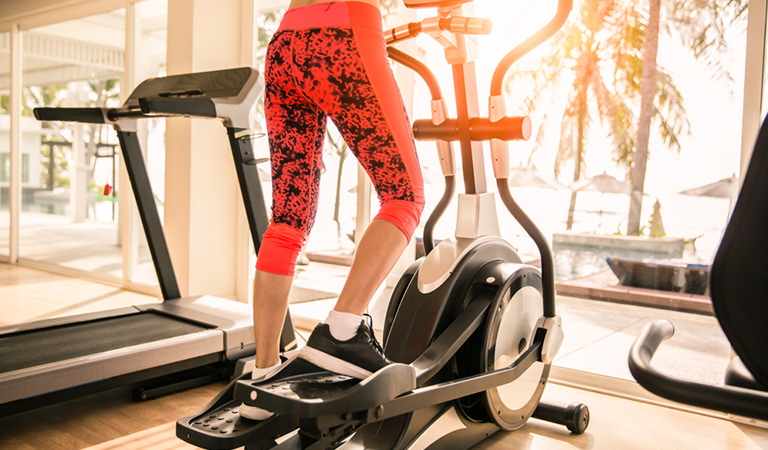
It’s important, once you’ve climbed onto the machine, that you align your feet so they are as parallel with each other as possible, as the pedals can be oversized for your feet and this will ensure you avoid straining your hips while the machine is in motion.
Once you’ve successfully boarded the elliptical machine, it’s important to get your arms in the right position. Most of the time, handlebars on elliptical machines are stationary, though some have moveable bars to simulate skiing type motion, so this is worth keeping in mind; once you’re stable, pull your shoulders down slightly and toward the back.
Having got into this position, you’re now ready to get started with the workout. Keep your plan in mind while using elliptical machine so that you know what you’re doing and what you’re ultimately aiming towards, useful both for motivation and so you don’t cause excessive strain on yourself.
Using Elliptical Machine
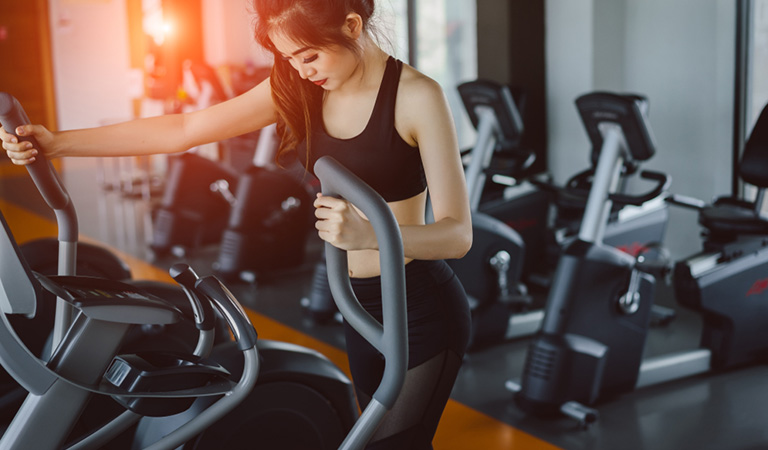
Once you’re ready to set off, slightly bend your knees and place forward pressure on one pedal. This will move the other pedal and create an oval – or elliptical, thus the name – motion. Try to avoid locking your knees in the process of bending them, as this can be deeply uncomfortable and even painful – if you’re concerned that your knee has locked or you experience acute knee discomfort, stop using the elliptical machine and take a break, seeking medical assistance if necessary. Maybe you would go back to your treadmill for some days of use.
Make sure, while engaging in the exercise, to pace yourself; start with a base pace speed that is comfortable for you, but at the same time, don’t be afraid to challenge yourself. Over time, slowly increase the incline of the walk and the resistance to graduate the challenge and ensure increased calorie burn. For instance, start walking at your base pace for around two minutes, then increase the incline or resistance for the same amount of time, before decreasing back again to recover for one minute. Repeat as necessary, or as according to your exercise plan.
Also remember to cool yourself down once the exercise session is completed, perhaps by walking at a base pace for a few minutes to allow your pulse and heart rate to return to normal levels gradually. Remember, not doing so can cause dizziness or light-headedness.
Using elliptical machines is an entry-level, accessible form of cardiovascular exercises; it is a useful trainer especially for if previous injuries make walking, jogging or running without mechanical assistance challenging.
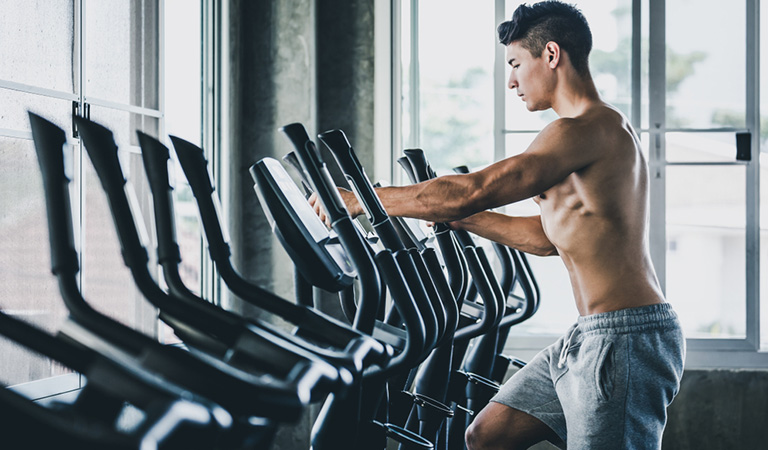
In general, it is definitely useful to make sure you have a plan in mind before stepping onto the machine – make sure you know in advance how much you want to challenge yourself and how long you’re going to perform the exercise for. It’s also important to make sure you cool down afterwards to prevent dizziness.
It’s also worth changing up your workout daily – repeating the same workout day after day will hamper your progress. Increase the challenge you set yourself over time, as this will not only improve your end results but also give you a sense of progress and motivation.
Make sure to keep an eye on the monitor regularly as well. It’s useful to know how long you’ve been walking, jogging or running for, and some machines will tell you your heart rate, which is ideal for cool down sessions after your day’s exercise is completed.
Finally, remember to keep focused; staying in the correct mindset and avoiding distraction is useful to ensure you make the most of your elliptical trainer and to keep yourself motivated to complete your session.


